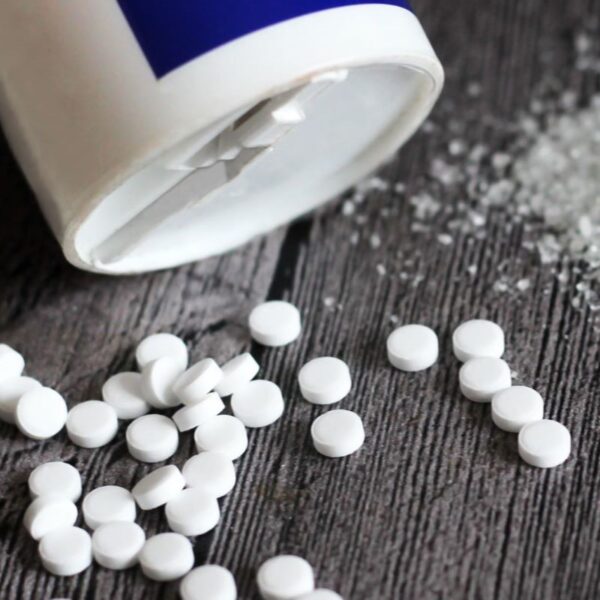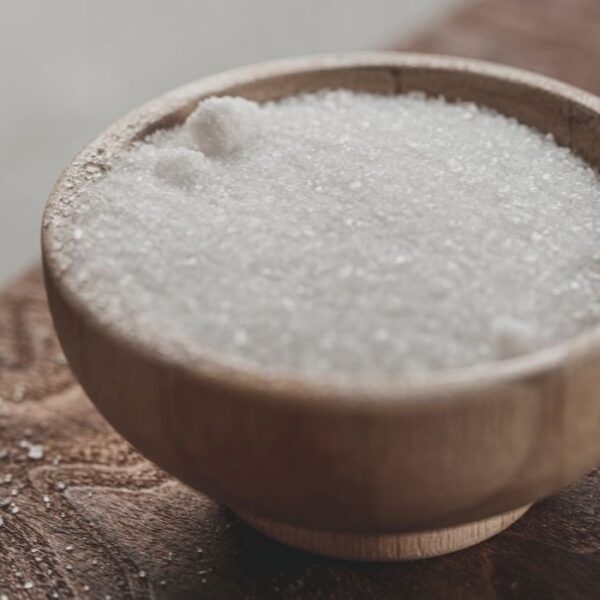Flavor enhancers (flavoring agents) are food ingredients to enhance flavor and aroma. They are often used to make food taste better and can be natural or artificial. This article discusses the three commonly used flavor enhancers in the food industry. It highlights their key similarities and differences in chemistry, properties, usage, formulations, and regulatory information.
What are Some of the Most Common Flavor Enhancers?
Yeast Extract
Yeast extract is the concentrate of the soluble fraction of yeast and, more particularly, Saccharomyces cerevisiae. It is rich in nucleotides, proteins, amino acids, sugars, and trace elements. Yeast extract is a rich source of amino acids, including glutamic acid ~5% and ~10% w/w total glutamate. It is characterized by a savory flavor and is used to round off the taste of food products.
Glutamates
Glutamic acid is an α-amino acid used by almost all living beings in the biosynthesis of proteins. It is a non-essential amino acid, i.e., the human body can synthesize it. Glutamic acid and its salts, viz. monosodium glutamate, calcium di-glutamate, monopotassium glutamate, monoammonium glutamate, and magnesium di-glutamate are flavor enhancers. Glutamates are naturally occurring flavor enhancers. When added to a food, they impart the umami taste that intensifies food’s meaty, savory flavor, as naturally occurring glutamates do in stews and meat soups. The chemical structure of glutamic acid is shown below.
Source: Wikipedia
5’-Nucleotides
Nucleotides are structural units of RNA and DNA. IMP and GMP among the nucleotides mainly impart strong umami flavor and contribute to sensory impact in savory foods. These nucleotides are being used to enhance the flavor profile of food products. They also show a synergistic effect with glutamate to give an umami taste and are often used together. Guanylic acid and inosinic acid are used in their native form, and their sodium or calcium salts are used as flavor enhancers in the food industry. The chemical structure of disodium 5′-inosinate & disodium 5’-guanylate are shown below.
Disodium guanylate
Disodium inosinate
Source: Wikipedia
How are Flavor Enhancers Produced?
Natural Sources
| Glutamate | 5’-Nucleotides |
| Proteins: Glutamic acid is a natural component of proteins. (Casein, Gluten, Glycinin, and Myosin contain 21-35% Glutamic acid). However, glutamate in protein is not free and has no taste unless the protein is hydrolyzed to make it glutamate-free with an umami taste. Some contain free glutamate: Plant Sources: Tomato, Potato, Kombu, etc. Animal: Scallops, Sea urchins, Shrimp, etc. Processed Foods: Cheese, Soy sauce, Fish sauce, etc. Commercially isolated from natural sources by hydrolyzing the proteinaceous material and passage through ion exchange resins. | 5′-Inosinate Sources: Bonito, Sardine, Chicken, Beef, etc. 5′-Guanylate Sources: Shiitake mushroom, Porcini, More,l etc. |
Chemical Synthesis
| Glutamate | 5’-Nucleotides |
| Glutamic acid can be chemically synthesized from acrylonitrile, converted to cyanopropionaldehyde, and then glutamic acid. One of the disadvantages is chemical synthesis gives a racemic mixture of enantiomers. Glutamic acid is treated with sodium hydroxide to obtain sodium glutamate. | 5′-nucleotides are produced by enzymatic degradation of ribonucleic acid or by chemical phosphorylation of inosine. |
Fermentative Production
| Yeast Extract | Glutamate | 5’-Nucleotides |
| Microorganism: Saccharomyces cerevisiae The yeast’s enzymes break down the cell content, and the cell wall is removed to concentrate the remaining fraction. Mostly autolysis: However, in some cases, acid or exogenous enzyme preparations are added. | Microorganisms: Corynebacterium glutamicum, Pseudomonas reptilivora, Brevibacterium flavum, Microbacterium ammoniaphilum, Arthrobacter sp α – ketoglutarate is the key precursor for glutamic acid. Biotin is the most critical growth factor. In a two-stage fermentation process, ketoglutaric acid is produced and then transformed into L-glutamic acid. A single-step approach can also be used. | Microorganisms: Bacillus subtilis and Corynebacterium ammoniagenes It is used as precursor for obtaining inosinate. |
Use of Flavor Enhancers in the Food Industry
Flavor enhancers increase the overall richness of food products by enhancing a particular flavor. They may have an intrinsic taste of their own or complement another flavor to highlight it. A wide range of natural and artificial flavor enhancers are used in the food industry to make the food appetizing. Not only do they improve the taste, but they may also affect the functional (viscosity, hygroscopicity, texture), nutritional (protein content, salt content, sugar content, sodium content), and chemical (pH, acid value) properties of the food they are used in.
Under the property of flavor enhancers to augment other tastes, they are also used in the food industry to reduce the salt, sugar, or fat content of food products by partially replacing them.
Applications in the Food Industry
Flavor enhancers are used in all sorts of food products. The choice of flavor enhancers depends on the intrinsic flavor profile of the food & the suitable innate flavor of the enhancer. Some flavor enhancers go very well with a particular flavored food product. The list is not limited to the following applications.
Suitability (Subjective)
| Yeast Extract | Glutamate | 5’-Nucleotides |
| Sauces, bouillons, meat dishes, readymade meals, and savory snacks | Soups, soy sauce, deli meat, pepperoni, salami, pastrami, sausages, ketchup, mustard, barbeque sauce, mayonnaise, salad dressing, canned vegetables, french fries, frozen meals, fast food, and chicken nuggets | IMP is more suitable for vegetables, seafood, spicy foods & fermented foods. GMP is more suitable for food containing cream, fat, oil, meat, and cheese products. |
Formulation Considerations
Variants
| Yeast Extract | Glutamate | Nucleotides |
| The processing conditions used and the method of manufacturing yeast extract have a huge impact on its sensory profile. The composition of yeast extract in terms of amino acids, free glutamates, salt, and other components greatly impacts its taste. Moreover, the “right” taste components in the correct ratio offer a wide range of products with a great diversity of taste profiles like meaty, brothy, smoky, etc. | Each salt of glutamate exhibits different characteristics in terms of taste, stability, required dosage levels, and activity. | 5’-Inosinate 5′-Inosinate is produced by decomposing ATP (adenosine triphosphate), which decomposes into AMP and 5′-inosinate. Production of 5′-inosinate begins when the animal is dead and slowly proceeds. As in the case of yellowtail, the concentration of 5′-inosinate reaches a maximum level about 10 hours after killing. 5’-Guanylate 5′-Guanylate is produced by the decomposition of ribonucleic acid. In living cells, ribonucleic acid does not come into contact with ribonuclease, but when cells are dead, it produces guanylate. In natural sources, 5′-guanylate is decomposed into guanosine by nucleotidase at room temperature. |
Stability
| Stability | Yeast Extract | Glutamate | Nucleotides |
| Heat | Yeast extract can be used efficiently below 120°C. It masks the bitterness and strengthens the umami taste. | Free glutamate is not easily broken by heating even at 150 and 245°C. | Free glutamate is not quickly broken by heating even at 150 and 245°C. |
| Light | Prevent | Prevent | Prevent |
| Oxidation | Prevent | Stable | Stable |
| Moisture | Very hygroscopic | Prevent | Prevent |
Sensory Properties
Umami Taste
“Umami” is Japanese and can be translated approximately as “tasty.” It is considered the fifth taste. Umami is a meaty, savory taste that lingers for quite a long time and is characteristic of well-matured protein-rich products. Umami doesn’t have an intensifying effect, but a modulating one: it takes the edge off bitterness and slightly increases saltiness, but otherwise has little impact on the basic taste varieties. Yeast extract, glutamates, and nucleotides improve the umami taste profile of food products.
Organoleptic Properties
| Yeast Extract | Glutamates | 5’-Nucleotides |
| – Taste like bouillon- salty, slightly bitter, malty, and rich in umami – Used to round off-flavors – Some specialized yeast extracts bring intense umami flavor or specific notes like beef, chicken, toasted, roasted, and more – Off-note masking: Yeast extract will mask off-notes originating from plant proteins or sweeteners and their alternatives | – Considered to have no significant taste of its own – Enhances the umami profile of the food – Used to refine sour and salty taste | – No intrinsic taste of its own – IMP enhances salty, sour, top notes, and spicy notes. GMP improves the body and may provide a creamy, fatty, oily feel – Strong flavor enhancement when used together (IMP+GMP). Do not interfere with delicate flavors – Enhance only the present flavor without significant alteration |
| – Aroma: Meaty, Brothy – Color: Yellow to Brown | – Aroma: Odorless – Color: White | – Aroma: Odorless – Color: White |
Taste Threshold
| Glutamates | 5’-Nucleotides |
| – 0.03% in water (Detected at the least concentration) – Synergistic effect along with inosinate: 0.002% | – Inosinate: 0.012% & Guanylate: 0.0035% – When presented along with monosodium glutamate (0.1%); Inosinate: 0.00010% & Guanylate: 0.000030% |
Taste Intensity
| Yeast Extract | Glutamates | 5’-Nucleotides |
| About 60% of the yeast extract composition is a blend of proteins and amino acids, which brings out the strong umami taste. | Shows a strong initial taste enhancement. Creates a unique sensation of almost instantaneous mouth-watering. | Inosinate shows a strong initial taste enhancement. It is slightly weaker than GMP in providing the umami taste profile. Guanylate, on the other hand, has a more emphasizing and lingering aftertaste. It lasts longer on the tongue, which enhances the after-perceived taste. |
Mechanism of Taste
| Yeast Extract | Glutamates | 5’-Nucleotides |
| Glutamates/glutamic acid are detected by the mechanism described in the adjacent cell. For the salt content of yeast extract, ion channels play a role in the perception. | Detected by taste receptor cells and conveys information about the presence of protein-rich source. iGluRs, mGluR4 and T1R1/T1R3 involved. It acts as a gustatory stimulus and neuromodulator. Detection involves several G protein–coupled receptors. | T1R1/T1R3 are involved in the perception. |
Synergism
Three umami receptors (T1R1 + T1R3, mGluR4, and mGluR1) were identified in humans. Of which T1R1 + T1R3 receptor exhibits synergism. The flavor enhancers discussed above show synergism in improving the flavor profile of food as follows:
Inosinate & Guanylate
There is a large synergism between glutamate and 5′-inosinate or 5′-guanylate. Disodium 5′-guanylate is 3.8 times as active as disodium 5′-inosinate. However, the qualitative effects of these nucleotides are virtually identical. Moreover, the taste profile of I+G is complimentary, where inosinate brings the initial solid taste followed by the long aftertaste of guanylate. These salts are primarily used together to obtain the optimum effect. The ratio can be 3:1 of inosinate to guanylate, which might vary as per the requirement of the formulation.
Glutamate & Nucleotides
There is a synergism between glutamate and the 5′-nucleotides. In humans, the response to the mixture is about 8 times larger than that to glutamate alone. Since glutamate and 5′-inosinate are contained in various foods, we taste umami induced by synergism in daily eating.
The latent flavor level of monosodium L-glutamate was also detectable when the 5′-nucleotide solution was employed as a medium. The threshold level of disodium 5′-inosinate or disodium S’-guanylate is reduced sharply (~100 times) in a solution of monosodium L-glutamate, and the threshold level of monosodium L-glutamate is reduced sharply (~10 times) in a solution of S’-nucleotide.
However, this relationship is not linear. At lower relative concentrations, the comparative effectiveness of the nucleotide is much greater. In other words, for example, 1 g of guanylate and 10 g MSG corresponds to 209 g of MSG alone, whereas 1 g of guanylate and 100 g of MSG corresponds to 556 g of MSG alone.
Yeast Extract & Nucleotides
Yeast extracts can induce the umami taste, the flavoring effect of monosodium glutamate (MSG), when providing glutamate below 1% in foods, i.e., below the amount required for pure MSG.
Synergism with Salt
Salt is the most basic taste enhancer used in food products. It shows synergistic activity with other taste enhancers to improve their functioning. Salt enhances the efficiency of other flavor enhancers when used together. When used with glutamate, the maximum enhancing effect is seen at 100 mM NaCl. The responses to umami substances such as glutamate, 5′-inosinate, and 5′-guanylate were also enhanced by NaCl.
The synergistic effect of salt with glutamate & nucleotides is mutual, i.e., flavor enhancers are believed to enhance salt flavor. Flavor enhancers have been shown to increase salty taste in smaller reductions in sodium chloride content. The sensory defects caused by replacing sodium chloride with potassium chloride at a 50% level were corrected using inosinate & guanylate at concentrations of 300mg/kg each.
Nutritional Profile & Absorption
| Yeast Extract | Glutamate |
| Yeast extracts contain partly hydrolyzed protein with 35-40% free amino acid and B vitamins and some trace elements. | About 20 g/day of glutamate, which comes from free glutamate in foods and the digestion of proteins in foods, is absorbed by the small intestine. Most glutamate adsorbed is used as major oxidative fuel for the gut, metabolized into other nonessential amino acids and production of glutathione. Dietary glutamate does not go to tissues such as the brain and muscle. |
Dosage Level
| Food | MSG (%) | 5′-Nucleotide (50:50 IMP and GMP) (%) |
| Canned soups | 0.12-0.18 | 0.002-0.003 |
| Canned asparagus | 0.08-0.16 | 0.003-0.004 |
| Canned crab | 0.07-0.10 | 0.001-0.002 |
| Canned fish | 0.10-0.30 | 0.003-0.006 |
| Canned poultry, sausage, ham | 0.10-0.20 | 0.006-0.010 |
| Dressings | 0.30-0.40 | 0.010-0.150 |
| Ketchup | 0.15-0.30 | 0.010-0.020 |
| Mayonnaise | 0.40-0.60 | 0.012-0.018 |
| Sausage | 0.30-0.50 | 0.002-0.014 |
| Snacks | 0.10-0.50 | 0.003-0.007 |
| Soy sauce | 0.30-0.60 | 0.030-0.050 |
| Vegetable juice | 0.10-0.15 | 0.005-0.010 |
| Processed cheese | 0.40-0.50 | 0.005-0.010 |
| Dehydrated soups | 5.0-8.0 | 0.10-0.20 |
| Soup powder for instant noodles | 10.0-17.0 | 0.30-0.60 |
| Sauces | 1.0—1.2 | 0.010-0.030 |
Labeling
| Yeast Extract | Glutamate | Nucleotides |
| – Natural flavoring ingredient appropriate for most food and beverage applications – Non-GMO (when substrate & strains are non-genetically modified organisms) – Halal* and Kosher* | – Food Additive Number: E621 – Non-GMO (when substrate & strains are non-genetically modified organisms) – Halal* and Kosher* | – Food Additive Numbers: Disodium guanylate – E627 Disodium inosinate – E631 – Non-GMO (when substrate & strains are non-genetically modified organisms) – Halal* and Kosher* |
Handling
| Yeast Extract | Glutamate | Nucleotides |
| – Extremely hygroscopic – Difficult to suspend: Forms clusters in water (require mechanical force) – Very fine particle size: Difficult to handle in large quantities | Easy to handle | Easy to handle |
Safety and Regulatory Considerations
| Yeast Extract | Glutamate | Nucleotides |
| – Yeast extract has been determined to be generally recognized as safe (GRAS). – It can be used as a flavoring agent and adjuvant at a level not to exceed 5 % in food. | – MSG is included in the GRAS (generally recognized as safe) list of food ingredients by the U.S. Food and Drug Administration. – Joint Expert Committee on Food Additives (JECFA) of the Food and Agricultural Organization of the United Nations and the World Health Organization (FAO/WHO) reviewed and endorsed the safety of glutamate, allocating an acceptable daily intake (ADI) for MSG as ‘‘not specified.’’ | – MSG is included in the GRAS (generally recognized as safe) list of food ingredients by the U.S. Food and Drug Administration. – The Joint Expert Committee on Food Additives (JECFA) of the Food and Agricultural Organization of the United Nations and the World Health Organization (FAO/WHO) reviewed and endorsed the safety of glutamate, allocating an acceptable daily intake (ADI) for MSG as ‘‘not specified.’’ |
Fun Facts About Flavor Enhancers
Yeast Extract
- Yeast has been used for centuries, primarily for baking and brewing beer. It wasn’t until recently that we started using yeast extract as a flavor enhancer.
- Yeast extract is a good source of B vitamins, including B12, which is especially important for vegetarians and vegans. Some yeast extracts are fortified with additional B12.
- Yeast extract contains naturally occurring glutamates, contributing to its umami or savory flavor.
Glutamates
- While many people associate glutamates with MSG (monosodium glutamate), they naturally occur in many foods we eat daily, like tomatoes, parmesan cheese, and mushrooms.
- In 1908, the Japanese scientist Kikunae Ikeda identified the unique umami flavor of seaweed broth due to glutamates. This discovery led to the creation of MSG as a commercial product.
- Though glutamates are often associated with savory tastes, they can enhance the flavor of sweet dishes by balancing and rounding out flavors.
5′-Nucleotides
- When combined with glutamates, certain 5′-nucleotides (like inosinate and guanylate) can amplify the umami sensation, making foods taste even more savory.
- Some 5′-nucleotides are naturally present in ingredients like mushrooms, fish, and certain meats.
- To boost the savory experience, many snack food companies include 5′-nucleotides in their recipes, especially in conjunction with glutamates.
The Umami Sensation
- Apart from sweet, sour, bitter, and salty, umami is recognized as the fifth basic taste. It’s often described as a savory, brothy, or meaty sensation.
- Recent scientific studies have revealed that humans have specific taste receptors for the umami taste. These receptors can detect glutamates and other related compounds, creating a unique flavor experience.
- Some evidence suggests that by using umami-rich foods and enhancers, chefs can reduce the salt content of dishes without sacrificing flavor. This tactic has potential health benefits, especially for those looking to decrease their sodium intake.












